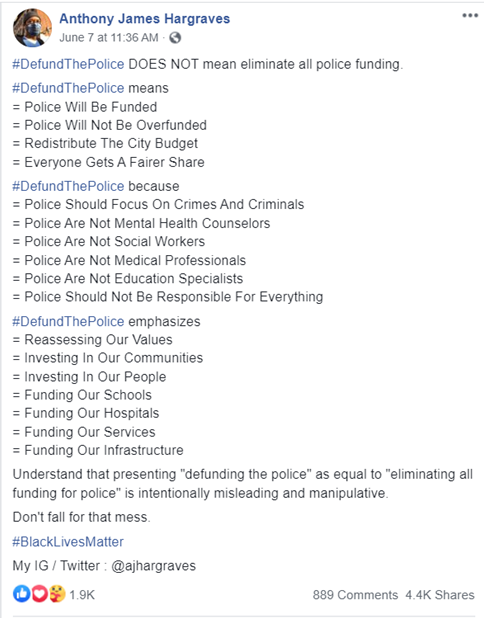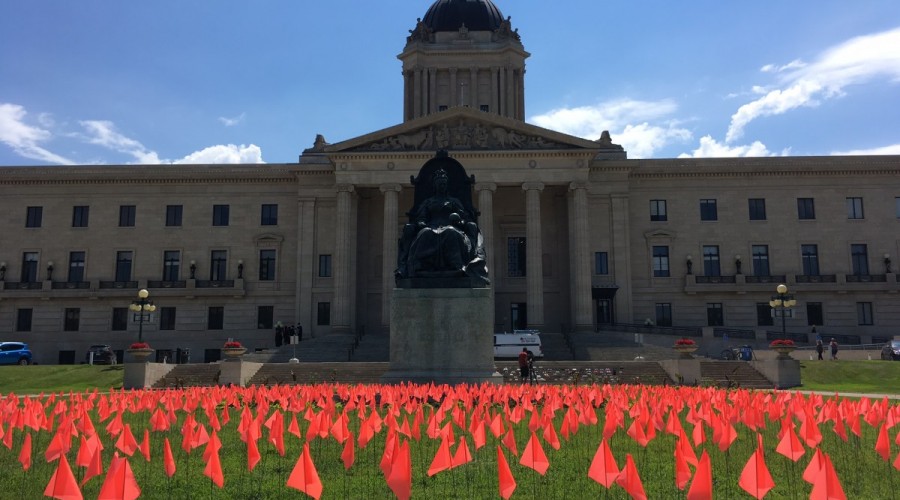
Hashtags, Digital Blanks, and Social Justice
Lisa Gitelman’s contribution to the study of ‘the document’ in the West, Paper Knowledge: Toward a Media History of Documents (2014), begins with a long list of so-called “blank books” from the 1894 American Dictionary of Printing and Bookmaking. The accounting ledger and the writing book are two such examples from the list. Her discussion evolves to include a close relative, the printed, fillable form. These “printed blanks,” a development from ancient and medieval forerunners, were not, in fact, blank: they were printed to frame particular genres of handwritten input, and were documentary as soon as they were filled in by the user. Printed blanks are considered a significant stop in the emergence of what has been construed as the ‘modern self.’ Gitelman argues that filling them in “evidently helped people locate goods, map transactions, and transfer value, while it also helped them to locate themselves or others within or against the sites, practices, and institutions that helped to structure daily life.”1
A critical mass in the deployment of the printed blank was reached in the eighteenth century, and has only increased over time. Having passed into digital formats, the online world is replete with fillable blanks.2 Social media platforms, like Instagram, Facebook, Twitter, TikTok, SnapChat, and even YouTube, are elaborately articulated ‘digital blanks’ whose frameworks impel user engagement and compel conformity to and compliance with proprietary and conventional textual input requirements. Just as their print forerunners, social media platforms—to borrow from Gitelman’s assessment of printed blanks—“structure knowledge and instantiate culture,” and work “to mold, to direct and delimit expression.”3 Although their capacity for “perfunctory expression” has been made more transparent through the revival of physical gesture and affect in the stock supply of emojis, GIFS, memes, and other forms of audio-visual display, their formal “inertia” has remained subliminal due to their ostensible dynamism, usually registered as modes of interpersonal communication and media participation within the context of Web 2.0 network sociality.4 Moreover, like their printed relatives, these digital blanks do not just connect people to people and people to things, but “point toward tensile connections among media forms.”5
One of these media forms, the hashtag, is a microform of the digital blank. The hashtag is a metadata tag—a piece of code—that organizes, links, and disseminates online information by users filling in verbal content preceded by the symbol ‘#’ as a structural prompt or set frame. Additionally, once filled in, it is a form of documentation that encodes its own preservation and curation nexus. Although user-generated and variable in content, it is simultaneously architectural and environmental. While the symbol itself, variously known in English as the ‘number-’, ‘hash-’, or ‘pound-’ sign, has a long history outside the digital realm, its adoption and adaptation for online digital information management in the Web 2.0 environment connects it to the organizational legacies of the printed blank in society. The role of the hashtag in sociocultural organization is derived from its practical use in creating, shaping, identifying, and navigating the spaces through which embodied individuals move and organize themselves inside and outside the online environment. Like the printed blank, its function is to include and exclude data, an effect of which is the creation and configuration of communities patterned according to that data. Hashtag dissemination practices retrieve dynamics of authority and centralization in governance by which individual and group identity is constructed and maintained. As a digital blank, the structural form of the hashtag guarantees its stability across the Internet through the dissemination process, highlighting its potential as a force for homogenization of thought, behaviour, and emotion. Regardless of its particular fillable content, the hashtag exerts moral force in an economy of transactions where social, cultural, and political identities are conjoined to the available tessellation of things, including concepts, people, and objects. It is no less radical or violent in its powers of configuration than any print-based blank, whose effects over hundreds of years shaped modern Western societies, and produced equally powerful problems of identity based on exclusion and inclusion within hierarchies of influence, privilege, and control.
Like all media, the hashtag works as language does in that it is both a medium of communication and a text.6 Equally important are its syntactic and semantic properties. Syntactically, a hashtag has nominal and deictic functions: that is, it names at the same time as it points to particular things, from concepts to objects to people. It may be comprised of any part or parts of speech, often arranged to ‘make sense’ as an utterance. While some hashtags may contain only one word, as for example #Love, #Mom, or #Nike, many are comprised of multiple words or phrases, and are designed to operate as catchphrases, slogans, shibboleths, or statements, like #StopClimateChange, which expresses the imperative mood. Semantically, it works on lexical, conceptual, and cognitive levels. The hashtag is an example of propositional logic in action. As users create, adopt, adapt, and apply a hashtag, they explore entailments, truth values, and truth conditions embedded in the utterance and any juxtaposed entites. Lexical transformations take place and semantic ranges are expanded as lexemes are used in novel contexts, collocations, or combinations. Conceptual frames evoked by hashtags and their juxtapositions tap into patterns of cognition, affecting people at the deepest levels of conscious and unconscious reaction.7 Their content may elicit the range of human emotion, as for example feelings of loyalty, piety, patriotism, anger, or joy, and thereby guide perception and engagement at the level of embodiment. They are powerful tools of propaganda and persuasion, and in their iconicity may function similarly to brands or logos.
The structural form and functional properties of the hashtag exert specific pressures on composition and use within the context of macroform digital blanks, that is, social media platforms, wherein linguistic contours are analogous to the dialects and registers promoted, for example, by the machinery of bureaucratized societies. They are a type of cultural inscription that requires subscription: by their very nature, they imply self-identification in relation to propositional content and modalities of dissemination, thence to an array of interpretative communities. These interpretative communities may exist as in- and out-groups across a range of discursive contexts. Levels of engagement within these communities are dependent on textual analysis, sometimes derived from assumed knowledge, a shared sense of reading, or common language. The dialectical dynamics of the hashtag among members of interpretative communities include processes of editing, annotating, and correcting.8
The hashtag #DefundThePolice illustrates these properties. This hashtag gained popularity in the wake of the murder of George Floyd, a black man, by a white Minneapolis police officer during an apparent arrest on May 25, 2020. Across social media platforms, it generally travels together with the hashtag #BlackLivesMatter as a concatenated pair. As a social-justice complex, its inherent logic is conditional in relation to the Black Lives Matter movement: propositionally, if #BlackLivesMatter, then #DefundThePolice. Although a biography exists for ‘defund the police’ as a concept,9 the historicity of a word, phrase, or concept contributing to the content of a hashtag does not foreclose debate over its meaning and application. As a response to its resurgence in the world of the digital blank, a range of interpretative communities have engaged in its analysis. Specifically, confusion over the use of the word ‘defund’ in either its broad or narrow—and continually evolving—sense is a devisive lexical-conceptual semantic issue in public discourse that is seen to militate against its propositional logic.
Self-identification with the concept, even if understood in relation to #GeorgeFloyd, #BlackLivesMatter, and anti-Black racism in policing, turns on popularly-held allowable limits to the meaning and application of the word ‘defund’. Take, for example, the pithy title of staff-writer Andrew Ferguson’s article in the “Ideas” section of The Atlantic, which hooks into the heart of the controversy. The title, “‘Defund the Police’ Does Not Mean Defund the Police. Unless It Does,” proposes the concept as an unsolvable logical conundrum, followed by a self-referential, subtitular probe posed as a question that zeroes in on its lexical content: “Am I supposed to take it literally?”.10 Several leaders have emerged in the renewed process of defining and explaining the concept in its hashtag iteration. A notable example is Anthony James Hargraves, whose public Facebook post—emphasizing that “#DefundThePolice DOES NOT mean eliminate all police funding”—was designed as a guide to and delimiter of the hashtag’s lexical-conceptual meanings; this same post was published as a thread on Twitter. The post has been redistributed by thousands of network members who have subscribed to its content. Despite the exegetical work contained in the post, it is accompanied by extensive textual analysis that continues to debate the apparently dissonant connotations of the wording of the hashtag itself.11 Textual analysis of the hashtag has been adapted to other registers and media formats: for example, a video “#Explainer” intended for children has been created by CBC Kids News and disseminated on YouTube.12

What brief examination of this specific hashtag reveals is the problem of reconciliation between lexical and conceptual meaning, propositional logic, and the powers of social configuration latent in the form of the digital blank. No less powerful than the printed blank of former centuries in its ability to create and recreate the conditions under which embodied beings organize and navigate the spaces they occupy in the real world, the phenomenon of the hashtag demonstrates the intimate relationship between documentation, the structuring of knowledge, and cultural instantiation. Ultimately, hashtags are connectors between tangibles with moral force in an insistently physical economy of human personhood that is enacted in the mundane world of embodiment and spatiality.
#BlackLivesMatter, #DefundThePolice, and other social-justice complexes, like #OccupyWallStreet and #MeToo, are directly concerned with embodiment and spatiality in relation to human rights and the public sphere. #BlackLivesMatter, as call to tear down anti-Black systemic and personal racism, has primarily, but not exclusively, been invoked in reference to anti-Black violence, and has produced a large documentation of human rights abuses against Black individuals; #DefundThePolice is conjoined to this movement. #OccupyWallStreet was imagined as a call to physically occupy public places connected to financial centres in order to bring down those in power and force a reconfiguration of capitalism. It spawned public documentation of harms to individuals attributed to the system in question, expressed through solicited photographs of people with their handwritten stories.13 #MeToo was developed as a way for individual women to create public documents of their personal experiences of sexual violence, which often included publicly naming perpetrators. In every case, these hashtags are understood as social movements tackling contemporary problems of human survival in relation to older modes of sociocultural organization and their attendant configurations of private and public space. The question of privilege in terms of how and why these are spaces are negotiated—and by whom—is unresolved, and remains one of the most critical in the 21st century landscape. As this conversation suggests, potential solutions lie in exploring the conditions under which the clash of old and new identities is taking place. It is imperative to expose, with a view to overcoming, the inadequacies of the systems—both old and new—that create them and the social forces that enable them.
Citation:
Reid, Jennifer. “Hashtags, Digital Blanks, and Social Justice.” Winnsox, vol. 1 (2020).
ISSN 2563-2221



